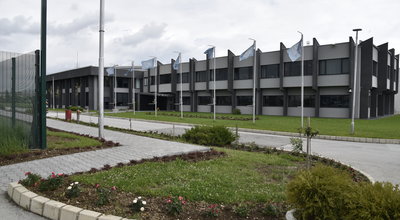The news which circulated in some Serbian media, and was later picked up by some news agencies, that Kosovo’s land contains a high level of depleted uranium, is in contradiction with a report published in Switzerland in 2001, by the UN Environment Program. This report stressed that after analysing the places in Kosovo bombed by NATO during the conflict, there was no depleted uranium contamination detected on the surface. The report says that the amount of depleted uranium pollution is too low to cause radiological or chemical danger.
“This means that eventual spreading is at such low levels that it cannot be detected or distinguished from natural levels of uranium found in cliffs and soil,” the report says.
The report emphasizes that corresponding radiological and toxicological dangers are irrelevant and non-existent.
“Relevant radiological and chemical dangers are therefore irrelevant,” says in the report.
The report emphasizes that the danger could come from the spread of pollution by wind and from being inhaled by people. It also notes the possibility of the spread of depleted uranium in underground waterways or plants through water flow.”
“However, in both of these cases, the amount of depleted uranium pollution at the points that have been analyzed is too low to cause any radiological or chemical problem. Now and in the future, the relevant risks are insignificant,” the report emphasizes.
The only danger which is described in the report relates to possible direct contact with the source of pollution, through contaminating hands or by swallowing contaminated soil.
In this report it has been concluded that the soil of Kosovo has not been contaminated.
“During the conflict in Kosovo, weapons with depleted uranium were fired from NATO war planes and it is reported that over 30 thousand rounds were used with depleted uranium (UNEP, 2000),” says the report.
Also, it has been cited that a special group of international experts made the evaluation, after it visited the areas around Pristina, Peja and Klina municipalities. “The mission did not find any evidence or indicators of depleted uranium in the visited areas,” says the report.
In the report published from the Serb media, that UN was hiding a report of the head of the UN Environment Program, Bakary Kante, where it allegedly said that the “consequences of Yugoslavia’s bombardments were terrible.”
“In May 1999, United Nations has hidden from the public the report of Bakary Kante, first head of the UN Environment Program, about environmental implications of the bombardment over Yugoslavia,” said the Serb media.
Parts of this report are said to have come out from an interview with the journalist Robert Parson for Vesti newspaper. “Parson talked exclusively to ‘Vesti’ about that how the reports (about the health implications from the use of weapons with depleted uranium in the Balkans) were criticized and changed in the offices of the United Nations,” wrote Serb media.
Depleted uranium is a product used in nuclear reactors and in nuclear weapons. It is distinguished from natural uranium by the different concentration of isotopes. Depleted uranium has about one third less isotopes that natural uranium.












